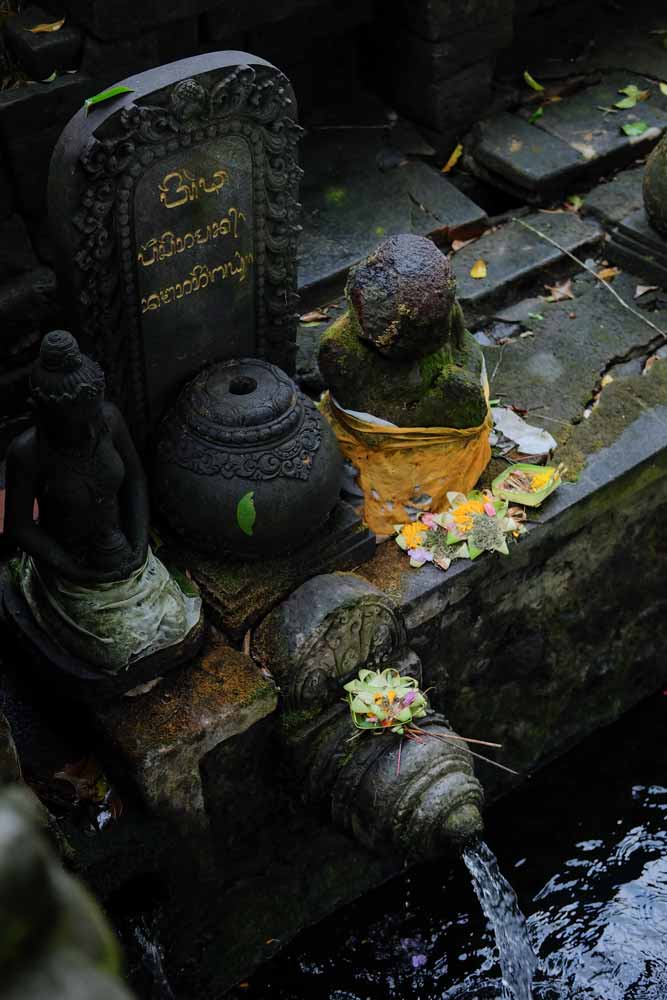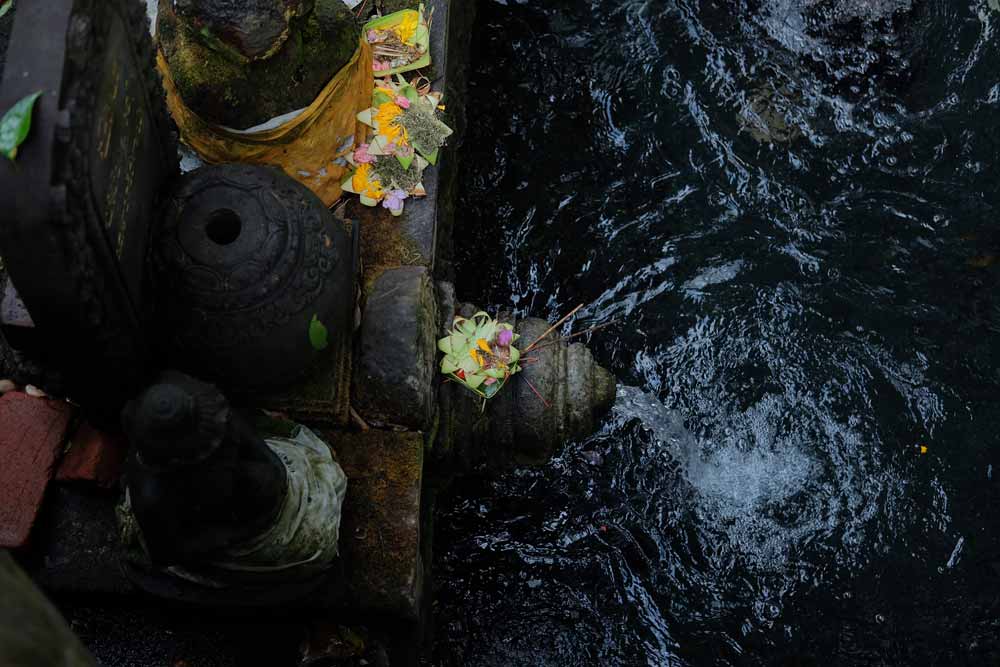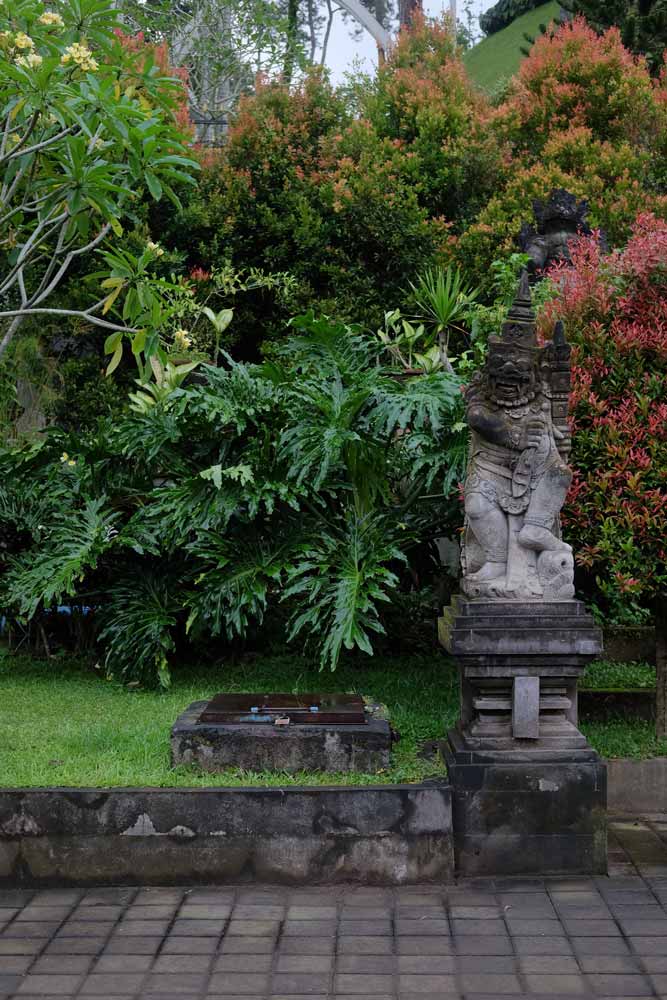In an area of Bali rich in ancient and archaeological history, you will find a temple within which holy waters are said to gurgle from deep beneath the ground. Pura Tirta Empul, a holy spring temple found in Tampak Siring, is where many Balinese Hindu will go to perform the melukat purification ceremony. However, it is the legend, the folklore behind its origins that gives this place of worship its island-wide veneration.

Temple Structure and the Melukat Ritual
Like all Balinese temples, Tirta Empul is separated into three sections: the jaba pisan, the outer compound; the jaba tengah, the central compound where the bathing pools are found; and the jeroan, or inner compound where worshippers will pray and set offerings. Between the central and inner compounds lays another pool, the water of which is crystal clear and the surface of this water is serenely still, reflecting the aqua blue of the sky. At the north end of the pool one can witness the natural spring burbling and feeding in waters, silt and sand clouding around the source, rising from beneath the ground. This is the sacred spring that gives the temple its name: tirta (or tirtha), meaning holy water, and empul meaning big spring. As a spring temple it is dedicated to Wisnu, God as water.

The main spring feeds the three pools in the jaba tengah where pilgrims will bathe, submerging themselves into the crisp, cool and healing mountain waters. There are 30 fountains throughout the temple but the three functioning pools have 13, 2 and 6 fountains respectively (west to east) under which worshippers bathe to complete their melukat purification ritual. This is a personal ritual to cleanse the mind, body and soul of impurities, both seen and unseen. Worshippers will pray and set their offerings, then enter the pool to shower themselves under certain fountains.
Not all the fountains are used for the melukat, however, as there are many types of tirtha (holy water) and priests or pilgrims will come to collect different tirtha for different uses. For example, the last fountain in the first pool emits Tirta Pengleburan Ipian Ala, holy water to clear bad dreams. The 10th fountain emits tirtha pengentas, used only by priests for Balinese cremations, not to be bathed under. Pilgrims will also collect regular holy water, tirta pembersihan, to use for their daily offerings at home.
Clearly Tirta Empul is a significant temple in Bali, an importance source of the constantly sought after holy water. But what makes this temple so special? The answer lies in the spring’s origins.


The History and Legend of Tirta Empul
Untangling myth and history in Bali is like separating two mating snakes: they holdfast to one another, gripping and twisting from top-to-tail that you are unsure where one ends and the other begins. So it goes with the origin stories of many Balinese temples, figures and beliefs.
The Tirta Empul complex itself was made in 962 AD by King Sri Candrabhayasingha Warmadewa of the ancient Warmadewa dynasty of Bali. He built the complex around this spring that sprouted from the ground — but why this spring exists is really the interesting story.

The legend of Tirta Empul starts with Mayadenawa, an infamous figure in Balinese lore, a malevolent king who ruled in Kintamani’s ‘Balingkang’ area and was said to be the son of King Jayapangus and Dewi Danu, goddess of the lake (there are alternative versions of his parentage). Mayadenawa was evil and powerful, said to harness magical abilities. As king he wreaked havoc amongst the Balinese Hindu, destroying temples, denying worship. His godlessness saw Bali fall to disease, famine and pestilence.
In response, a group of Balinese priests prayed for help at the top of Tohlangkir, the ancient name for Mt.Agung, abode of the gods. It was Lord Indra who answered, descending to Earth to defeat the godless King Mayadenawa.
A war ensued. Battle after battle, Indra and his army fought the vicious ruler whose cunning and deception seemed limitless. One night as Indra’s army slept, Mayadenawa snuck into their barracks and poisoned their water source — he crept in using the sides of his feet, carving footprints into the mountainside. This is where the area gets its name, tampak means foot and siring means slanted.
The next morning the army drank the poisoned water and became deathly ill. Indra, with his own godly power, pierced the land and stone beneath his feet to produce a healing spring from which his army drank and were saved. Today this spring is venerated as Tirta Empul. The poisoned water of Mayadenawa had its own spring in the temple, known as Pancuran Cetik, the poisoned fountain. Though now the source has dried out.


Later, Indra defeated Mayadenawa on a Wednesday of the 11th week of the Balinese Pawukon calendar, and this is when Galungan Day is celebrated. It is said that after he was slain, Mayadenawa’s blood trickled down the valley creating the Petanu River. Indra cursed the river saying that its waters would fail crops for 1,000 years, and this is where the river gets its name as petanu means cursed. As for Tirta Empul, it is said to be one of the sources of the Pakerisan River.
One story is thus the origin of not only Tirta Empul, but also of Tampak Siring, Galungan and even the Petanu River! Imbued with the magic and intrigue one can only expect here in Bali.
Visiting Tirta Empul Temple

The temple complex is found in the Tampak Siring area, 30-minutes drive north of Ubud. The entrance fee into Tirta Empul is IDR 30.000 for domestic visitors and IDR 50.000 for international visitors. Guests are expected to dress respectfully, a sarong to cover ones legs is highly recommended, as well as tops that cover shoulders.
Everyone is welcome to bathe in the pools of Tirta Empul not just Balinese Hindu. Although one must wear a sarong and a sash (available to rent for IDR 15.000), and changing rooms are available on-site.







